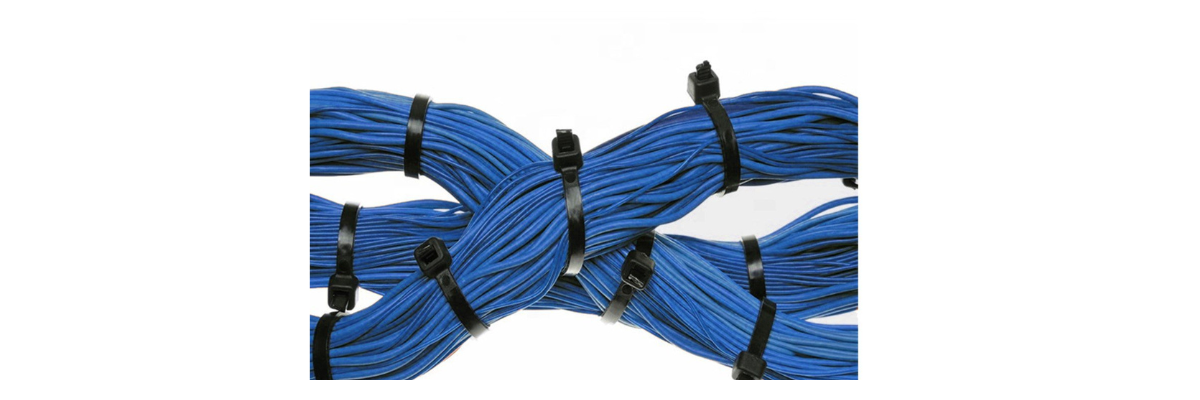1-877-445-6744 Live Support
1-877-445-6744 Live Support

The short answer is yes—cable ties and zip ties are the same tool, known by different names. The term “zip tie” is often used colloquially, while “cable tie” is the industry-standard term. Both names refer to the same product: a flexible, locking strap used for bundling and securing items.
Both cable ties and zip ties share several common features:
• Self-Locking Mechanism: Once inserted into the head, the tie cannot be loosened unless cut, providing a secure hold.
• Versatility: Used across industries, from electrical work to gardening.
• Variety of Sizes and Materials: Available in different lengths, widths, and materials to suit specific applications.
Despite their similarities, understanding the nuances in their types, materials, and applications can help you select the best product for your project.
• Material: Made from durable nylon.
• Uses: Ideal for general-purpose applications such as organizing cables, securing garden plants, or bundling lightweight items.
• Temperature Resistance: Can handle moderate temperatures but may degrade under prolonged UV exposure.
• Material: Nylon infused with UV-resistant additives.
• Uses: Designed for outdoor applications, such as securing outdoor wiring or fencing.
• Durability: Resistant to sun damage, making them suitable for long-term outdoor use.
• Material: Thicker and more robust than standard ties.
• Uses: Suitable for bundling heavy cables or securing large objects.
• Strength: Offers a higher tensile strength to handle greater loads.
• Material: Nylon with a reusable locking mechanism.
• Uses: Ideal for temporary applications where the tie needs to be adjusted or reused.
• Feature: Can be unlocked and removed without cutting.
• Material: Corrosion-resistant stainless steel.
• Uses: Perfect for harsh environments, such as marine, industrial, or high-temperature applications.
• Durability: Can withstand extreme temperatures, chemicals, and UV exposure.
• Material: Nylon with added dyes.
• Uses: Useful for color-coding wires and cables for easier identification.
Cable ties (zip ties) are incredibly versatile and used across numerous industries:
• Electrical Work: Organizing and bundling cables in residential, commercial, and industrial settings.
• Construction: Securing rebar, fencing, or temporary signage.
• Automotive: Managing wiring harnesses or securing parts.
• Gardening: Tying plants to stakes or trellises.
• Retail and Packaging: Bundling products or securing tags.
• Event Management: Fixing banners, lights, or decorations.
• Aerospace and Military: Specialty ties are used in high-stress, temperature-sensitive environments.
Selecting the right cable tie depends on several factors:
1. Material
• Nylon: Ideal for general indoor use.
• UV-Resistant Nylon: Suitable for outdoor applications.
• Stainless Steel: Best for extreme conditions.
• Specialty Materials: For specific industries, such as Tefzel for chemical resistance.
2. Size
• Length: Choose a tie long enough to wrap around the bundle with some excess.
• Width: Wider ties offer greater strength but may be harder to manipulate in tight spaces.
Consider the environment where the tie will be used. For extreme heat or cold, opt for ties made from materials like stainless steel or specialty polymers.
4. Reusability
For temporary applications, select releasable ties to reduce waste.
In essence, cable ties and zip ties are two names for the same versatile tool. While the terminology may vary depending on the region or industry, their function remains identical.
Understanding the types, materials, and applications of these ties can help you make informed choices for your projects. Whether you’re bundling electrical wires, organizing your home, or working in extreme industrial environments, there’s a cable tie (or zip tie!) designed for the task.
When selecting the right product, consider factors like material, size, and environmental conditions to ensure maximum durability and performance. And remember, whether you call them cable ties or zip ties, these handy fasteners are indispensable for countless applications.